Carb cycling is the foundation of what I do every day and with every client. I know through years of experience with many different clients that carb cycling works, so I’m going to introduce you to the basics and the five different carb cycling plans—Easy, Classic, Turbo, and Fit, and Extreme. I’m stripping it down to the basics to get you started:


What is Carb Cycling + How Does it Work?
Carb cycling is an eating plan with alternating high carb and low carb days. It’s that simple. It also has built-in reward days or reward meals (depending on the plan you’re following), so you can still eat your favorite foods on a regular basis. Sounds pretty much perfect, right? You can eat healthy foods, enjoy foods you love, and still lose weight.
While each plan has a different mix of high carb and low carb days, each day works basically the same:
- Eat five meals—no more, no less.
- Eat breakfast within 60 minutes of waking or whenever your feeding window opens if you’re an intermittent faster.
- For breakfast, you’ll eat a portion of protein, carbs, and fat.
- For your next 3 meals (snack, lunch, snack), you’ll eat either a low or high carb meal depending on which day you’re on. So, if you’re on a low carb day, those three meals will be low carb. If you’re on a high carb day, those three meals will be high carb.
- Your last meal of the day will ALWAYS be a low carb meal. Always.
- Choose approved foods.
- Drink ½ your body weight in ounces of water every day. So, if you weigh 150 lbs, you’ll drink 75 ounces a day.
How Does Carb Cycling Work?
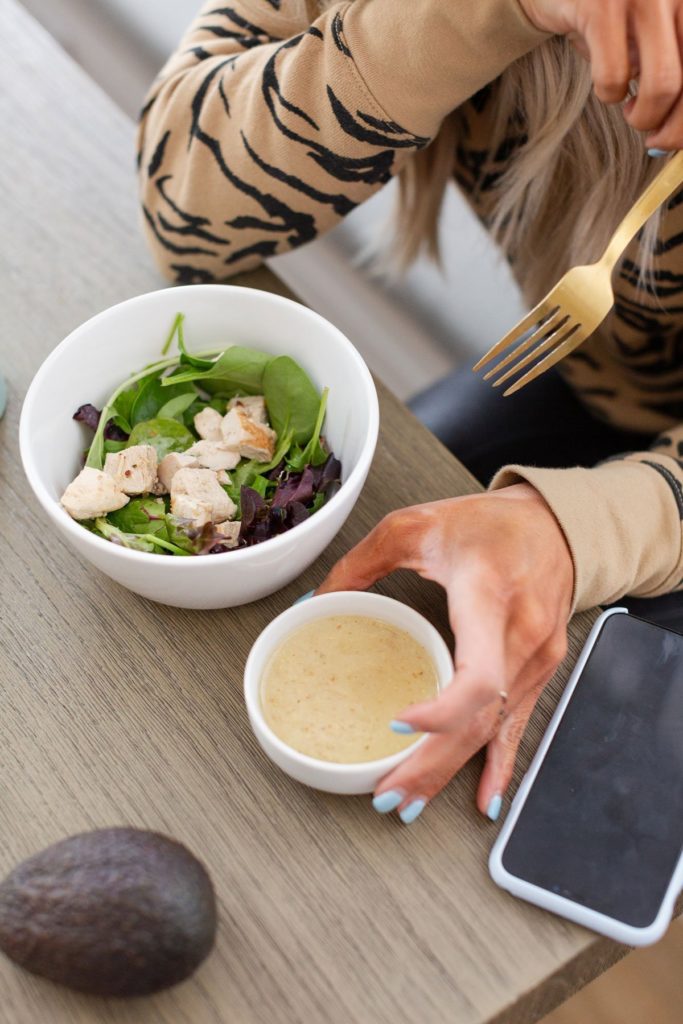

Carb cycling is based on the right combination of proteins, carbs, and healthy fats. In order to lose weight, our bodies need the right combination. Here’s why:
- Protein builds and maintains muscles and these muscles burn calories like an inferno. Protein also breaks down more slowly than carbs and fat, which burns even more calories and helps you feel fuller longer.
- Carbs are the preferred fuel source for your muscles and organs, and they come in healthy versions (vegetables, fruits, grains, and legumes), and not-so-healthy versions (cakes, cookies, soda, doughnuts, candy, and many processed foods). Healthy carbs are also crucial for burning calories, and since they break down more slowly than those not-so-healthy carbs, they keep your blood sugar and energy levels steady, and they also keep your calorie-burning furnace hot so it burns more calories!
- Healthy fats (unsaturated fats) eaten in moderation help the development and function of your eyes and brain and help prevent heart disease, stroke, depression, and arthritis. Healthy fats also help keep your energy levels steady and keep you from feeling hungry.
Why do we alternate high carb + low carb days in carb cycling?
On high carb days you’re stocking your calorie-burning furnace so that on low carb days your furnace burns fat, and lots of it! This pattern tricks your metabolism into burning a lot of calories, even on those low carb days. It’s an amazing and well-proven process.


What are the Benefits of Carb Cycling?
Carb cycling has many benefits:
- It fits any lifestyle.
- You’ll learn how to shed weight and body fat and how to make smart lifestyle choices for the rest of your life. This puts YOU in control.
- You’ll feel better and have more energy.
- You’ll eat the foods you love.
- You’ll build lean, strong muscles.
- You’ll be empowered physically, mentally, emotionally, and spiritually.
I’ve only skimmed the surface of carb cycling, so learn more about our five carb cycling plans to find your ideal cycle, and let’s get cycling!
Get even more information on carb cycling in both or our books: Extreme Transformation (the newest edition to our carb cycline lineup featuring the Extreme Cycle) and Choose More, Lose More for Life (which features our other four cycles).
If you’d like some help creating your own meals, there’s a handy “Create Your Own Meals” chart in this post! To get a customized cycle for you and your goals + several workout programs (from gym-based to bodyweight to dance) + the all-important life lessons (the key to long-term transformation), check out The Transform App.
Note: If you’ve been carb cycling using our book, Choose Lose More, Lose More for Life, you’ll notice that we’ve changed a couple of things since that book was published: You now include a fat for breakfast, and every final meal of the day is a low carb meal. Like with a lot of things in life, the more you do them, the more you learn about how to do them even better!
xo,
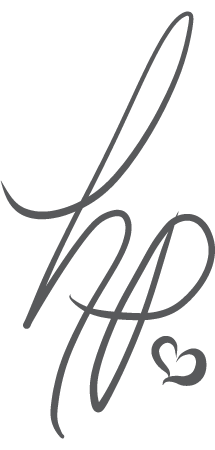
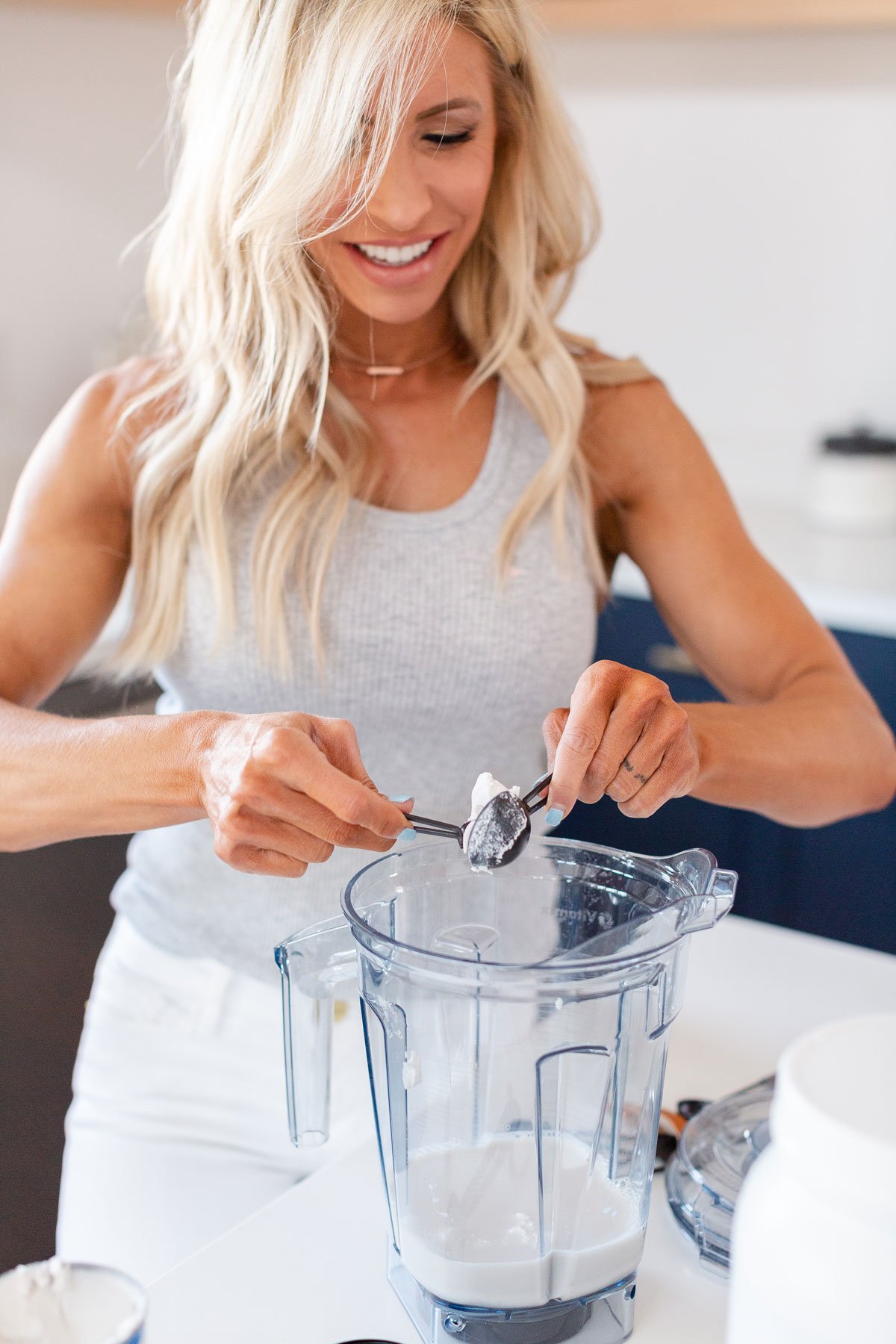

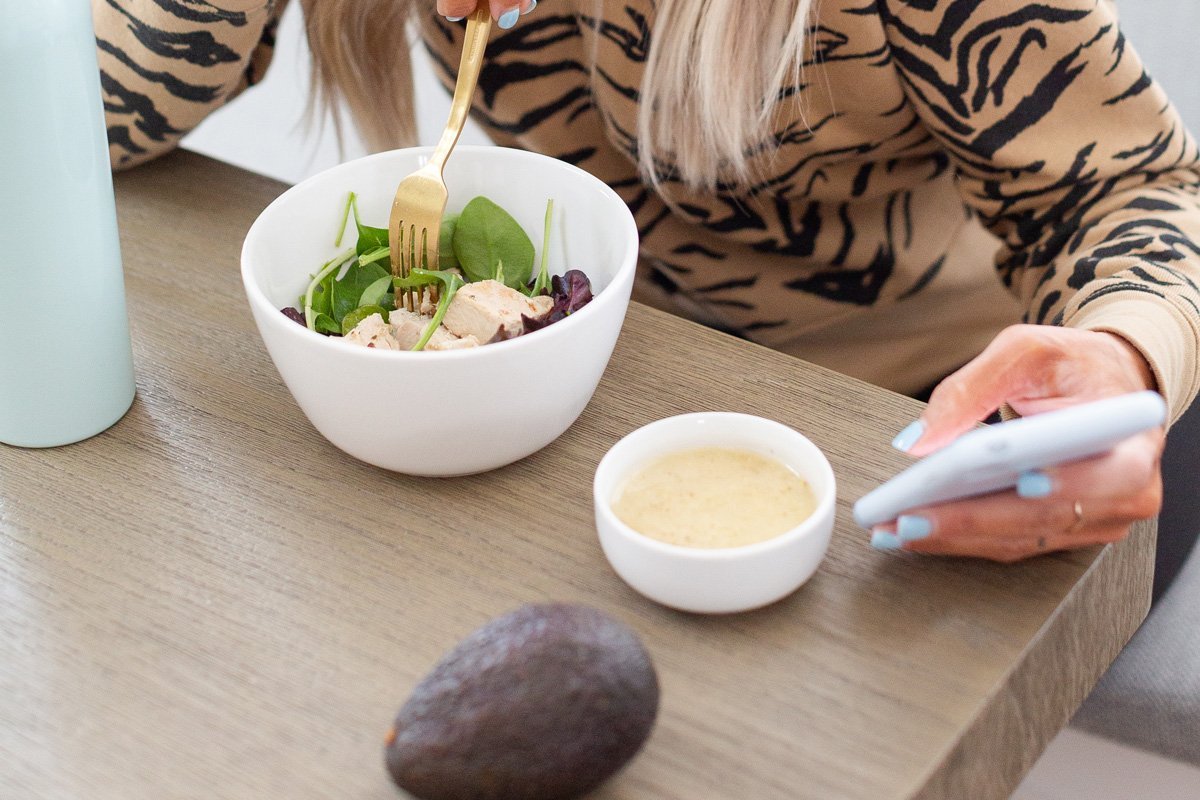

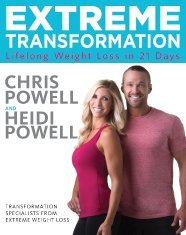



1,394 Responses
Hey! I am waiting for Chris Powell’s new book to come in the mail and am eager to begin carb cycling. My sister already started and loves it. I have been doing low carb since January and only eating about 1/2 cup of a starchy carb per day (following another program) but due to migraines, it was suggested that I eat the carb in the evening. The days I didn’t eat a carb in the evening I got a bad head he in the a.m. It may have been a coincidence, but pretty sure it wasn’t. How can I work this out in carb cycling? I think I have hit a wall in my current program and don’t feel 100%. Thanks!!!!
In carb cycling, even though they’re carbs, veggies have their own category. You can eat two fist fulls of veggies (the non-root/non-starchy type) with every meal, so those could be your carbs at night on low carb days. Happy carb cycling!
I get up at 4am to workout with friends, a variety of cardio, weights, n HIIT but my diet is a problem and I’ve been unable to drop weight for many years. After three kids I was able to get back in decent shape but I’m having real trouble reducing calories and I get easily frustrated. I’m a female, 6ft tall and 170-173 lbs. I enjoy working out bit I crave sugar daily and I eat well most of the time but I overeat frequently so I thought carb cycling may be the answer. I read Chris’s second book but the calories for me seem low, 1400 low carb days n 1600 high carb… Is that correct? Also I don’t like to eat before I workout because it makes me feel nauseous, can I eat afterward?.. This would be 2 hours after waking! Any advise would be helpful. I’m now finding myself in a Nasty yo yo period that’s lasted way too long, 2-3 years!
The calorie recommendations for women are 1200 on low carb days and 1500 on high carb days. As far as eating before working out, that is totally a personal decision, so do what works best for you. If you don’t eat before working out, then eat your first meal of the day as soon as possible after working out. Here’s a post that might also help: https://heidipowell.net/9194/qa-with-the-powells-to-eat-or-not-to-eat/. Happy carb cycling – you can do this!
Hi, I was just wondering, would it be at all possible to follow the turbo cycle using five low carb days? For instance, day 1 low carb, day 2 low carb, day 3 high carb, day 4 low carb, day 5 low carb, day 6 low carb, day 7 reward day. I am on week three of the turbo cycle and am finding the low carb days easier to stick with and prepare meals and snacks for than the high carb days. Please let me know, as I cannot find any information on if this switch would hinder my plan. Thank you!
Kelly
It’s best to follow the plan as outlined. Your body does need carbs to function properly and burn fat, so those high carb days are important. And each cycle is outlined as it is for some very good reasons and to help you be successful! Happy carb cycling!
Hello,
I saw you and your husband in an old Dr Oz episode they broadcasted here in Belgium a few weeks ago and I immediatly thought: that’s my solution. Feeling great with the classic carb cycle but I have one question right now: is quinoa a carb or a proteine?
Thank you and keep up the good work you’re doing.
Diane
Quinoa is a carb. Happy carb cycling!
Would beef jerky be a protein?
Yes, just be really careful of the sodium content.
I have been carb cycling for a few weeks now, following the turbo cycle in Chris’s book. I track my food on my fitness pal and I’ve noticed that many times I don’t meet the recommended daily calories of 1200 on low carb days and 1500 on high carb days. I don’t feel hungry, I feel like I am eating enough. Is it okay if I’m below those calorie suggestions?
You’ll want to stick to the 1200 calories for low carb days and 1500 calories for high carb days. Your body needs a certain number calories to simply function properly, and the program is designed to help you lose weight based on these calorie recommendations. Double check your portion sizes and make sure you’re getting all of the portions of each thing (protein, carbs, veggies, fats) with each meal. You can do this!
Hey Heidi! I’m very interested in trying carb cycling. Currently I’m weight training about 3 days a week and doing a lot of running. I’m wanting to transition into weight training 4-5 days a week and doing more HIIT instead of steady state cardio. I don’t really want to lose much weight-maybe 5-10 lbs but I want to build muscle and tone. Which cycle do you think would be the best for me? And which books should I get?? Thanks so much, yall are awesome!!!
You’ll want to get “Choose More, Lose More for Life.” It contains Chris and Heidi’s complete program, including all four carb cycles. Any of the cycles could work for you, and you can change cycles at any time. There is a section in the book that helps you figure out which cycle to start with. Happy carb cycling!
I think this program is an awesome idea, I just have one burning question:
For women, is it 1,200-1,500 NET calories or CONSUMED calories? I work out very often (teaching exercise classes and such) and burn around 200 calories just with my normal job. So would I then consume 1,700 on high carb days and 1,400 on low carb to accomidate for the caloric deficit? Or would it still be 1,500 and 1,200, respectively?
Thanks!
It’s 1200 and 1500 calories consumed. Happy carb cycling!
Just three questions about this whole thing:
1. Is it completely terrible if I have a reward meal for dinner? I eat out a few times a week, and having the reward meal for dinner would make things more flexible for those occasions.
2. Due to my work schedule, I often only eat 3-4 meals (3 meals and maybe a dessert after dinner. Even if I have a snack, it’s between lunch and dinner. Can this work of I eat breakfast, lunch, snack, dinner, and then another snack? (At least a few times a week- some days, I might be able to to do the midmorning snack more easily).
3. Is calorie counting required? I get that weight loss is calories in/calories out, but all the counting overwhelms me.
Oh, and a bonus question. Suppose I’m on the easy cycle and I take a trip to NYC or it’s a holiday. How “bad” is it to take a day off and make it a reward day and then just continue on the next day as if nothing happened? Obviously, it might impact my weight loss that week, but some eating plans are very against any kind of straying off plan.
Great questions! Let’s get you some answers: 1. The program is designed that your reward meals should not be your dinner meals because for most people this is a bit of a slippery slope and people have a hard time not overdoing that reward. And remember, you only have a reward meal on high carb days, and this is only for the Easy Cycle. All other cycles have a reward day, not reward meals. 2. It’s best to eat all 5 meals if you can. If your schedule doesn’t allow this, then do the best you can. The important thing is to get in all the required parts of each meal/snack (protein, carb or fat, and veggies), and you’ll want to try and stay away from a dessert after dinner (see #1). 3. Calorie counting is not required. Many people use it as a back up to portion counting to double check that they’re not getting too many or too few calories. Bonus: It’s best to follow the cycle as outlined. For holidays (like Thanksgiving and Christmas), it is okay to change that reward day, but otherwise you’ll want to keep the schedule as outlined. If you want to “permanently” change your reward day to say Friday, instead of Sunday, then you can do so, but just keep all the days in the same order. They are arranged this way for a reason. If you do add in extra reward meals/days, just keep in mind that this will affect your rate of weight loss. You can get much more information about the plan that will also answer additional questions in Chris and Heidi’s book, “Choose More, Lose More for Life.” It’s a great resource to have on hand. Happy carb cycling!
Hi! I posted this question yesterday but now I can’t find where I posted it, so I’m posting it again. Sorry for the redundancy.
I’m starting the turbo cycle and I work night shifts 3 nights a week. I know that the first meal is the one that has the carb even on low carb days. So, on my days off, my first meal is around 8am. But after working the night shift, should my first meal still be at 8am when I am getting ready to go to bed or when I wake up around 5pm?
Thank you!